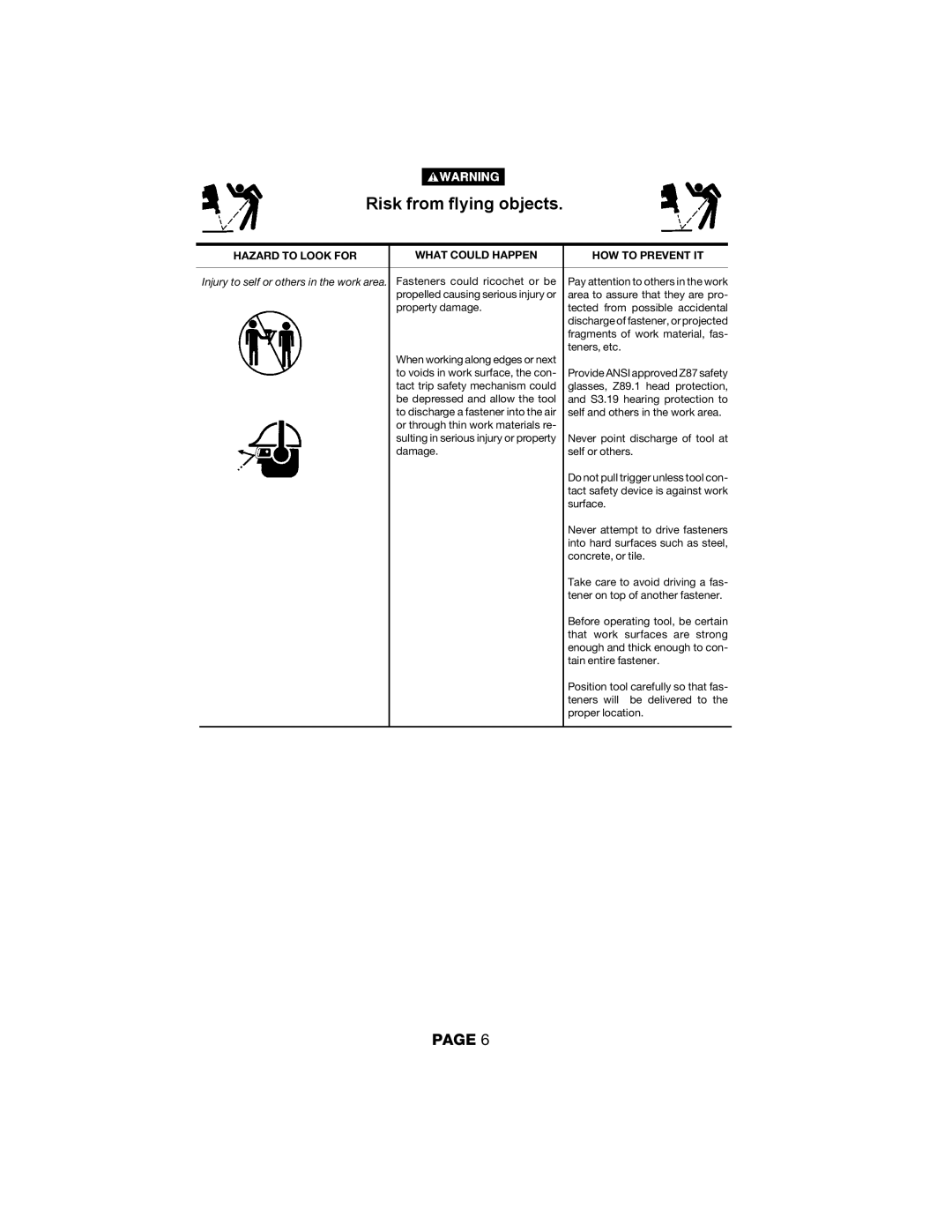
Risk from flying objects.
| HAZARD TO LOOK FOR | WHAT COULD HAPPEN | HOW TO PREVENT IT |
|
|
|
|
|
|
| Injury to self or others in the work area. | Fasteners could ricochet or be | Pay attention to others in the work | |
|
| propelled causing serious injury or | area to assure that they are pro- | |
|
| property damage. | tected from possible accidental | |
|
|
| discharge of fastener, or projected | |
|
|
| fragments of work material, fas- | |
|
|
| teners, etc. | |
|
| When working along edges or next |
|
|
|
| to voids in work surface, the con- | Provide ANSI approved Z87 safety | |
|
| tact trip safety mechanism could | glasses, Z89.1 head protection, | |
|
| be depressed and allow the tool | and S3.19 hearing protection to | |
|
| to discharge a fastener into the air | self and others in the work area. | |
|
| or through thin work materials re- |
|
|
|
| sulting in serious injury or property | Never point discharge of tool at | |
|
| damage. | self or others. | |
|
|
| Do not pull trigger unless tool con- | |
|
|
| tact safety device is against work | |
|
|
| surface. | |
|
|
| Never attempt to drive fasteners | |
|
|
| into hard surfaces such as steel, | |
|
|
| concrete, or tile. | |
|
|
| Take care to avoid driving a fas- | |
|
|
| tener on top of another fastener. | |
|
|
| Before operating tool, be certain | |
|
|
| that work surfaces are strong | |
|
|
| enough and thick enough to con- | |
|
|
| tain entire fastener. | |
|
|
| Position tool carefully so that fas- | |
|
|
| teners will be delivered to the | |
|
|
| proper location. | |
|
|
|
|
|
PAGE 6
